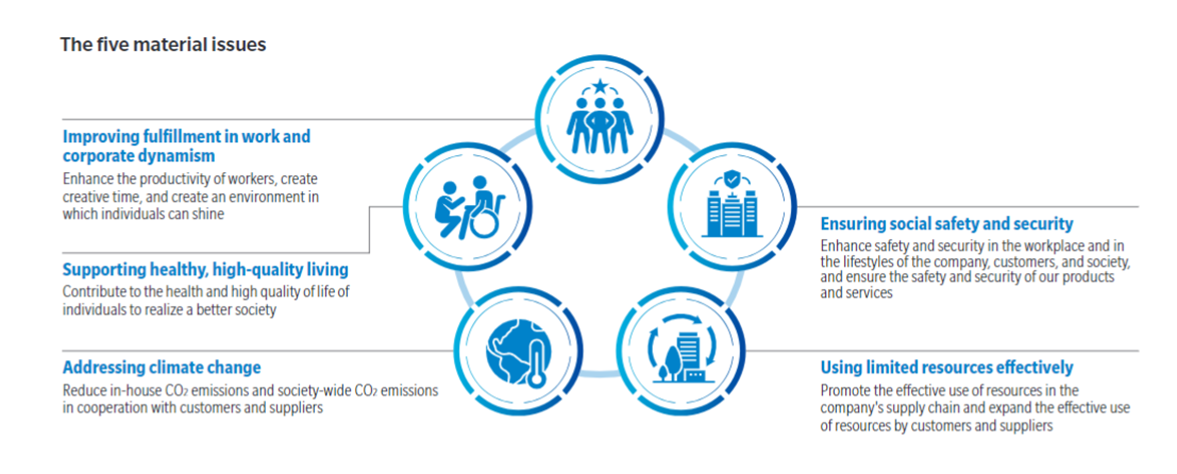Our future vision: Masashi Morii on addressing climate change
We’re proud to have been innovating for the good of society for 150 years, working tirelessly to achieve our vision of “Imaging to the People”. Konica Minolta has identified five themes that will create added value and solve predicted social and environmental issues between now and 2030. As we look to the future, we’re guided by these five material issues.

We spoke to Masashi Morii, Head of Centre of Competence
KM-1 at Konica Minolta Business Solutions Europe. He talked to us about how the business is addressing one of the five material issues that underpins our goals: addressing climate change.
We discussed Masashi’s perspective on protecting the planet for future generations by driving environmental impact, and envisioning a more sustainable, responsible business – and society.
"Customers know that they need to get out of mass production and mass waste printing. We support and give solutions to customers so that they can transform witout damaging their business."
Masashi Morii, Head of Centre of Competence KM-1 at Konica Minolta Business Solutions Europe
Firstly, can you tell us the most interesting part of your job role?
Masashi Morii: Our relationship with the customer starts after sales. It is really interesting, and I am happy to discuss with customers, and also get their feedback on our machines after they have used them. It's always a pleasure for me, to sit-down with a customer and work together to improve the customer’s situation.
How do you support Konica Minolta’s vision and purpose within your role?
Masashi Morii: In my role, imaging is the start of our actions. We want to visualise the industry challenge or the customer’s operation. Everyone can easily understand what it is, and then we can start to communicate and improve actions based on the visualisation.
What does “Imaging to the People” mean to you?
Masashi Morii: Imaging, I feel, is the start of an action and relationship. Because of imaging, people can find new things and think and improve something based on it.
How do you achieve “Imaging to the People” in your job?
Masashi Morii: Printing itself is the visualisation of knowledge, history, idea or whatever people want to show. In our production, we can make imaging of a customer’s actual operation of our machine. Then we and the customer can both see the same data and improve based on it.
What innovations are most exciting to you?
Masashi Morii: The purpose of our production print business is to create a society where value added prints are efficiently provided with minimum environmental impact. For example, the latest development is to make it possible to visualise a human’s attention rate. Users can check beforehand which print design is most attractive to consumers.
Why is addressing climate change important?
Masashi Morii: Any industry who addresses or changes their actions to mitigate climate change will be viewed positively by society, and it is obvious that environmentally unfriendly manufacturing damages our planet and such industry will never be allowed to continue.
How does your team address climate change?
Masashi Morii: When we focus on response to climate change, there are several key elements in our contribution. CO2 reduction and less use of fossil fuels and energy by changing from the current analogue centric supply chain to a digital centric supply chain. We have already discussed and agreed with some key printing companies in several major industries to work together with us to achieve this transformation from an analogue to a digital supply chain. And we believe our digital print technology can achieve it quickly, together with customers.
Can you expand on what customer pain points this will solve?
Masashi Morii: Customers know that they need to get out of mass production and mass waste printing. We support and give solutions to customers so that they can transform without damaging their business.
What are you most excited about the future?
Masashi Morii: In any commercial label and packaging printing field, many Konica Minolta printed products are seen in our lifetime and I will be very proud that I can explain to my children any time I see our contribution.
How do you imagine the next 150 years?
Masashi Morii: I am sure that flexibility based on our core imaging technology is a part of our Konica Minolta spirit. By that time, something will be made as our main business to support people's lives, and it may be invisible, but we will be definitely inside people's lives for the better.
Masashi’s insights show just how much Konica Minolta is innovating to address climate change. By using imaging to provide customers with innovative, more sustainable solutions, we can continue to drive environmental impact.
